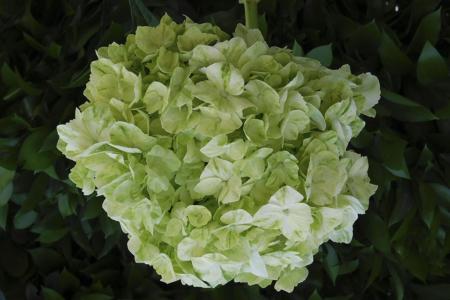Hydrangea mojito
(Hydrangea mojito)

Description
Hydrangea mojito is a deciduous shrub that belongs to the Hydrangeaceae family. This beautiful plant is a favorite among gardeners due to its large and showy flowers that come in various shades of blue and green. In this article, we will explore everything there is to know about Hydrangea mojito, including its origin, appearance, growing requirements, and how to care for it. Origin and Distribution Hydrangea mojito is a relatively new cultivar of Hydrangea macrophylla, which is native to Japan, China, and Korea. The cultivar was developed in the United States and was first introduced in 2010 by Bailey Nurseries, a wholesale nursery in Minnesota. Since then, Hydrangea mojito has gained popularity among gardeners due to its stunning foliage and flowers. Appearance Hydrangea mojito is a compact shrub that can grow up to 3-4 feet in height and width. Its leaves are large and glossy, with a bright green color that makes them stand out in any garden. One of the unique features of Hydrangea mojito is its striking flowers. The blooms are large and round, with a diameter of up to 8 inches. They appear in early summer and can last for several weeks, providing a beautiful display of colors that can range from pale green to deep blue. The flowers are composed of small fertile flowers in the center and larger sterile flowers around the perimeter, creating a unique appearance that is typical of hydrangeas. Growing Requirements Hydrangea mojito is a relatively easy plant to grow and care for, making it an excellent choice for beginner gardeners. However, there are some essential growing requirements that must be met to ensure the plant's health and vitality. Light: Hydrangea mojito prefers partial shade, where it can receive a few hours of direct sunlight each day. Too much direct sunlight can cause the leaves to burn, and the flowers to wilt. Soil: Hydrangea mojito thrives in moist and well-draining soil. The soil should be rich in organic matter and have a slightly acidic pH level between 5.5 and 6.5. If the soil is too alkaline, the plant may struggle to absorb essential nutrients, leading to stunted growth and poor flowering. Water: Hydrangea mojito requires regular watering to keep the soil moist. During periods of drought, the plant may wilt, and the flowers may turn brown and dry out. However, be careful not to overwater the plant, as this can cause root rot and other fungal diseases. Fertilizer: Hydrangea mojito benefits from regular fertilization with a balanced, slow-release fertilizer. Apply the fertilizer in early spring and again in late summer to promote healthy growth and abundant flowering. Pruning: Hydrangea mojito does not require much pruning. However, if the plant becomes too large or becomes congested with old wood, it can be pruned in late winter or early spring. Prune back any dead or diseased branches and remove up to one-third of the old growth to promote new growth and flowering. Pests and Diseases Hydrangea mojito is relatively resistant to pests and diseases. However, it may be susceptible to some common garden pests, such as aphids, spider mites, and scale insects. These pests can be controlled with insecticidal soap or horticultural oil. In terms of diseases, Hydrangea mojito may be affected by powdery mildew, leaf spot, and root rot. Conservation Status Hydrangea mojito is not listed on the IUCN Red List of Threatened Species, which means that it is not currently considered to be at risk of extinction. However, it is worth noting that the conservation status of cultivars, hybrids, and ornamental plants like Hydrangea mojito is not often assessed by conservation organizations. The focus of conservation efforts is typically on wild plant species and their natural habitats. Nevertheless, as with any plant species, it is important to avoid overharvesting, habitat destruction, and other forms of environmental degradation that could potentially harm populations of Hydrangea mojito or other plants. Gardeners and horticulturalists can help to conserve this beautiful shrub by using sustainable growing practices, avoiding the use of harmful pesticides and herbicides, and planting it in appropriate locations where it can thrive without impacting native ecosystems.
Taxonomic tree:







